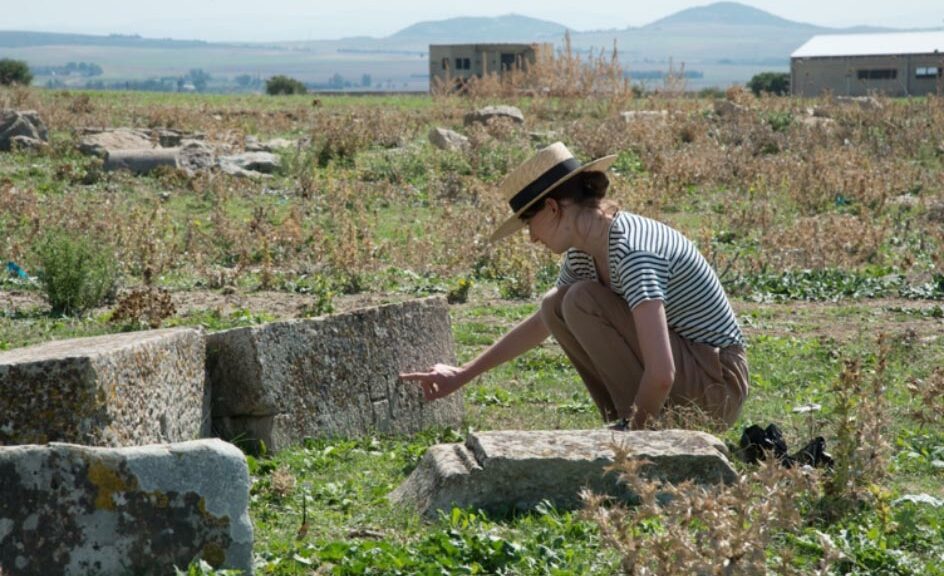Over 130 Roman Inscriptions Uncovered At Ancient Site Of Mustis In Northern Tunisia
Inscriptions have played a very important role in deciphering the secrets of the past. Archaeologists have uncovered over 130 inscriptions at an important ancient site in Tunisia.
Experts discovered a series of inscriptions at the abandoned city of Mustis. They are expected to provide numerous insights into the history and development of this important ancient metropolis.
A team from the Warsaw University’s Centre of Mediterranean Archaeology, in cooperation with Tunisian National Heritage Institute, was surveying the ancient city of Mustis, near Thugga, Tunisia. A number of epigraphic experts were involved in the project.
The mission was led by Professor Tomasz Waliszewski and it finished its work, only recently. During the survey, they found a large number of inscriptions.
During their investigations of the ancient ruins, the team found over 100 inscriptions. They all date to the era when this area was part of the Roman province of Africa. Waliszewski stated that “Our epigraphic team has already inventoried over 130 Latin inscriptions from Roman times” reported The BBC.
The epigraphers found a large number of texts that had been engraved onto buildings and tombstones. Those found on buildings tell the story of Mustis’ development, including the construction of public buildings and temples.
The headstones provide the names of citizens and “other everyday matters of the bustling city’s inhabitants” according to The BBC . The inscriptions are important because they tell us what was important to the citizens and they are a treasure trove for historians.

Moreover, the inscriptions are providing evidence with regard to the political history of the city. Mustis was “a municipium (a town with self-government bodies) at the time of Emperor Augustus” according to the Roman Art Lover. The inscriptions can tell researchers a great deal about the government and institutions of the metropolis. Roman Africa was renowned for its many cities and the texts can also tell us much about the process of urbanization in this part of the empire.
This is not the first time that inscriptions have been found in the area. Waliszewski, estimates “that there are over 500 Latin inscriptions in the Mustis area and nearby” reports The BBC. Some of these celebrate the achievements of emperors such as the North African Septimius Severus.

‘Mustis, or Musti, was first established by Numidians who had created a strong kingdom in the area. This realm was conquered by the Romans in the 2nd century BC after they defeated its king Jugurtha, and it was turned into a proconsular province.
Mustis was turned into a colony, by the conquerors. The famed general Marius “settled some of his veterans at Mustis which was redesigned according to usual Roman patterns” according to the Roman Art Lover.
The colony soon thrived because of its location on key trade routes and was probably a cosmopolitan society. Its economy was mainly dependent on agriculture.

Archaeologists have unearthed several temples, dedicated to Roman gods , such as Ceres, the Roman goddess of farming and cereals. Many villas have also been unearthed in the city that once belonged to the elite. An arch dedicated to the Roman emperor Gordian I was also built in the eastern entrance to Mustis and it can still be seen. Mustis went into decline in the 5th century as the Vandals, first raided and then conquered North Africa.
The Byzantines reconquered the city in the mid-6th century, but it never recovered its former glory. They turned the city into a small fortress, although the remains of a Christian basilica have been found in the ruins of the city.
It also appears that Mustis was a bishopric. The city declined after the Arab conquests and the “last excavated objects found in the city come from 12th century” suggesting that it was abandoned, sometime after that date, according to the BBC.
The ruined city was largely left intact down the centuries and it was re-discovered in the 19th century. In the 1960s many of the remains were restored, such as the Eastern Arch.
It is now part of an archaeological park but the remains in the area have been neglected for years. It is hoped that further research will be undertaken on the site and it is expected that more inscriptions will be found, revealing more about life in ancient Roman Africa.

